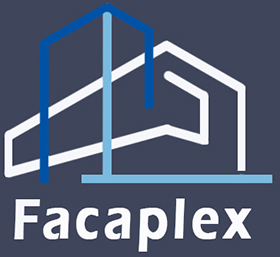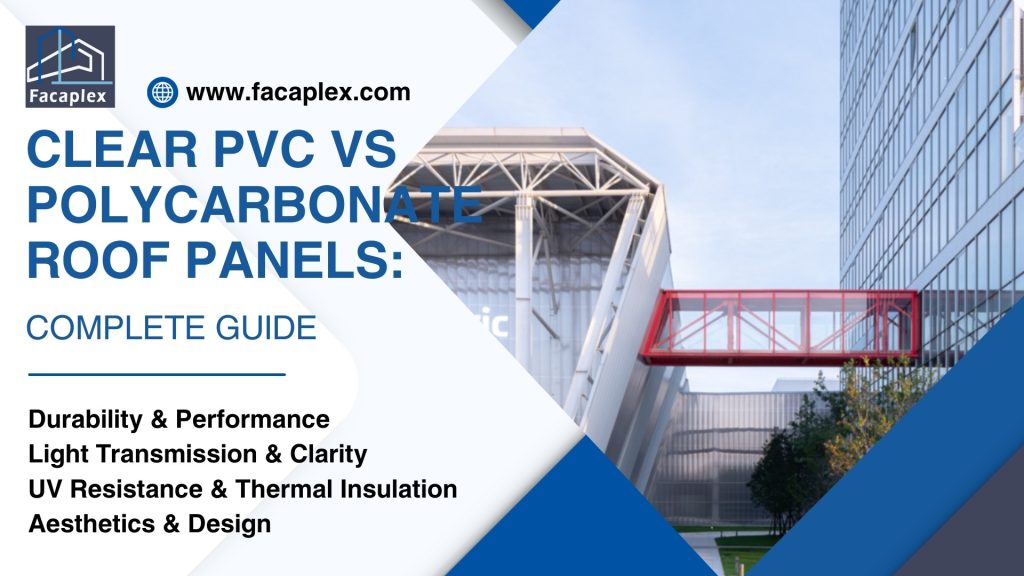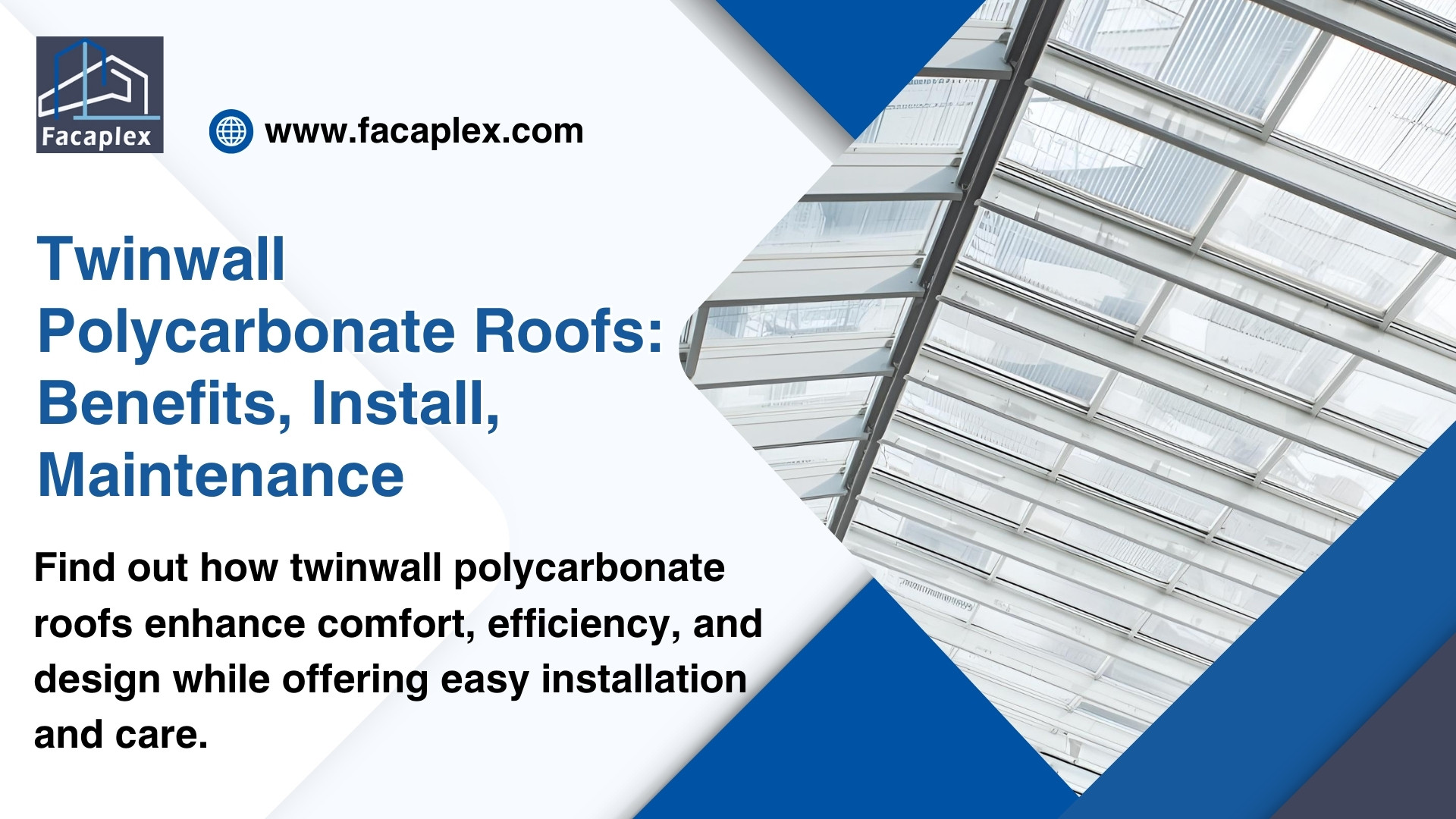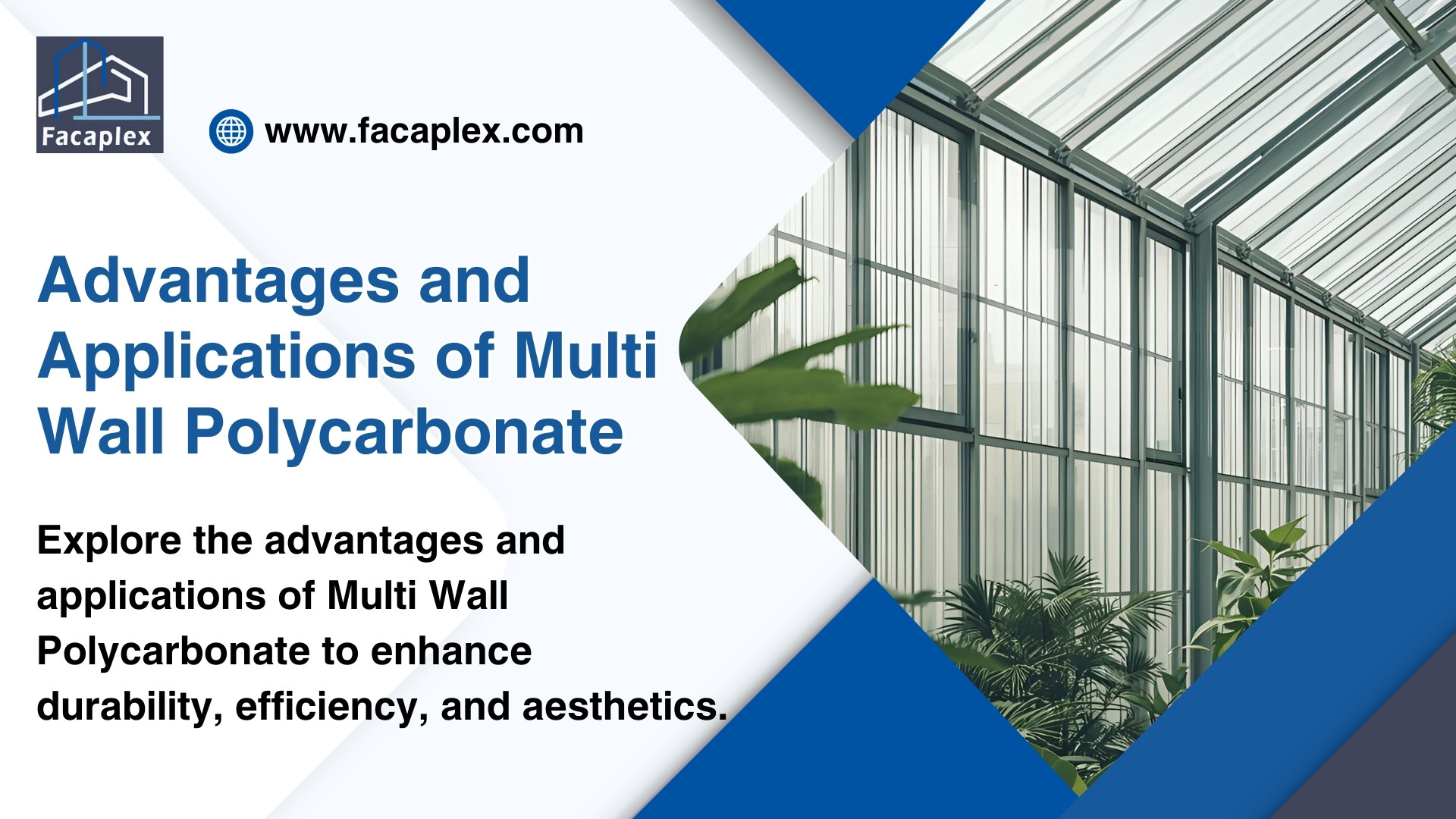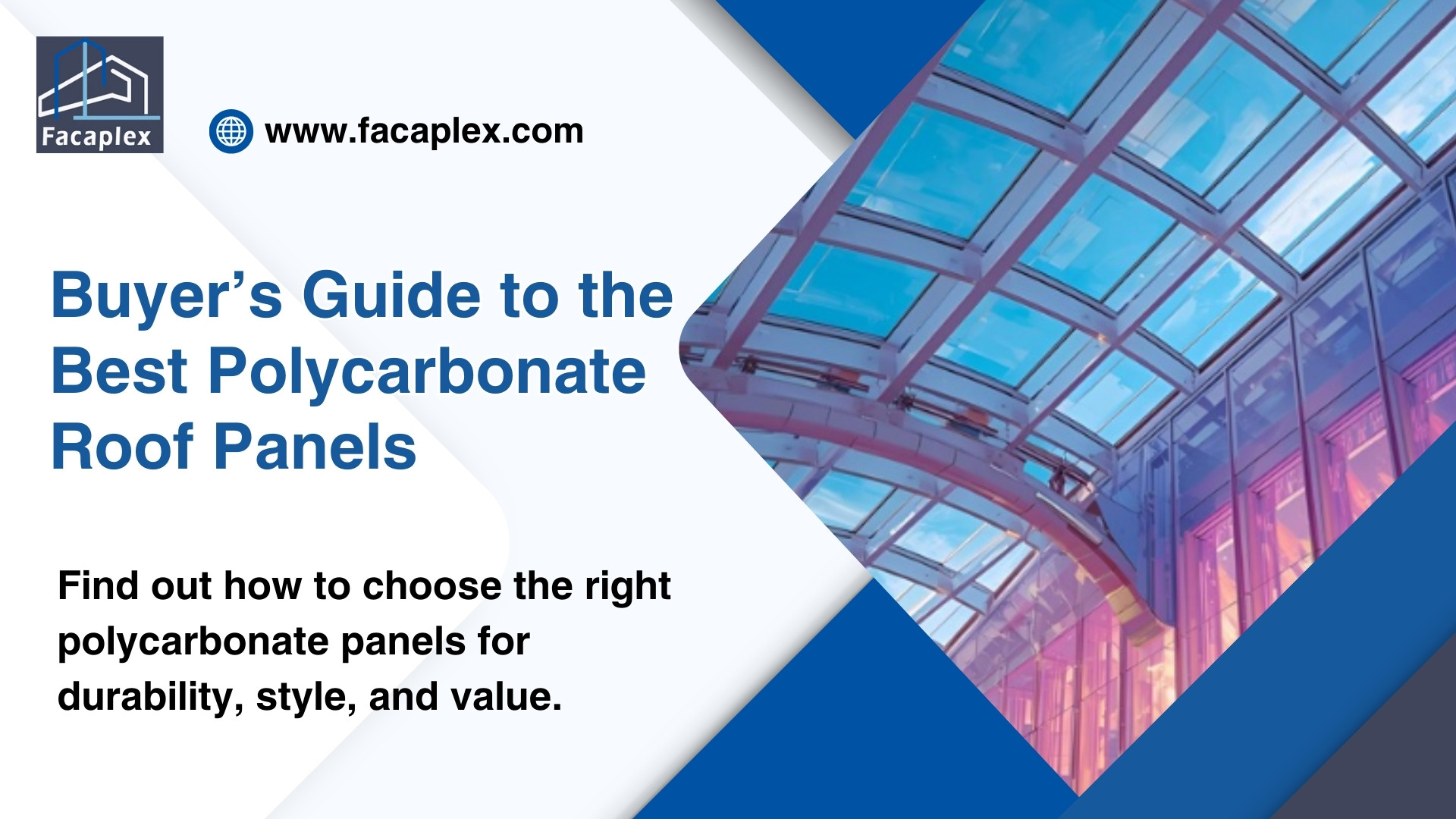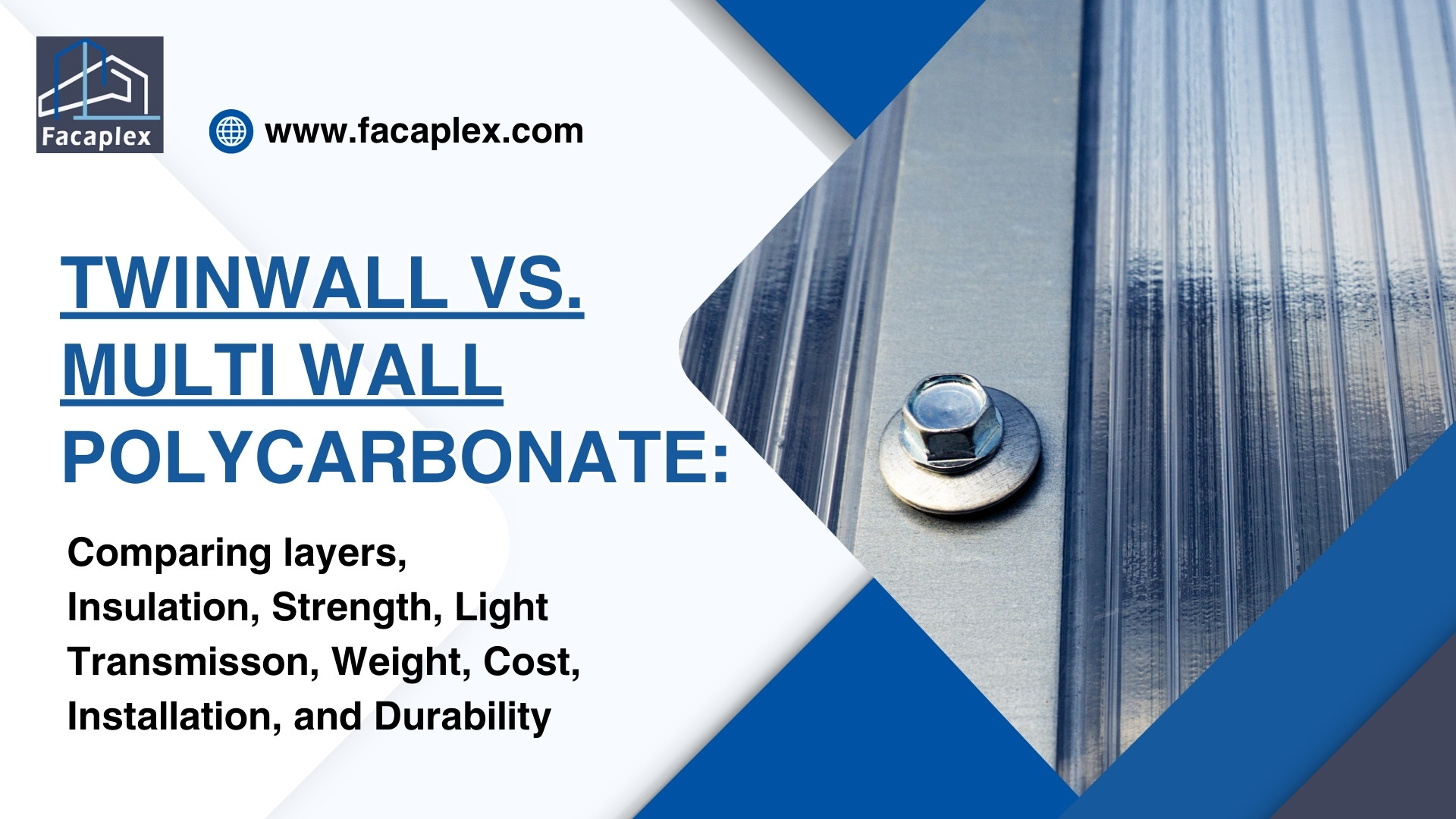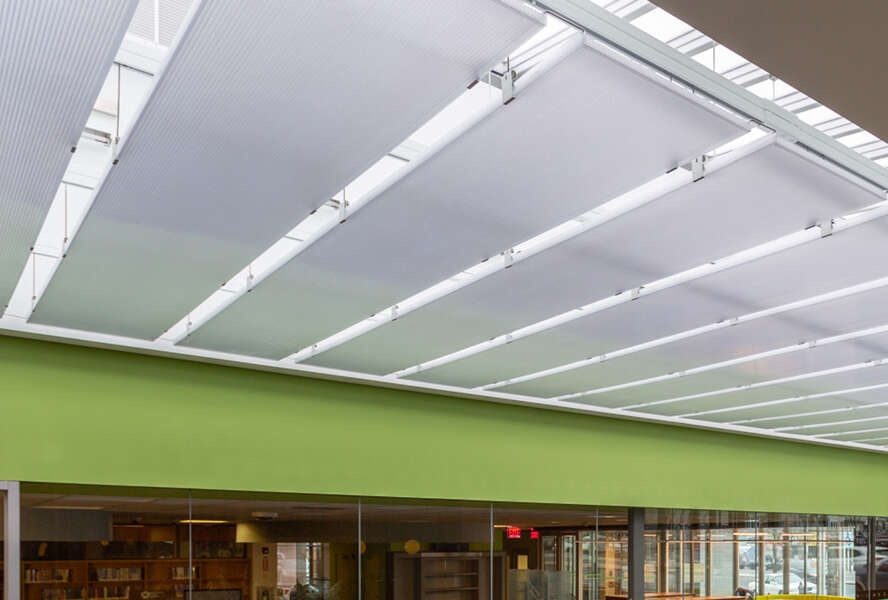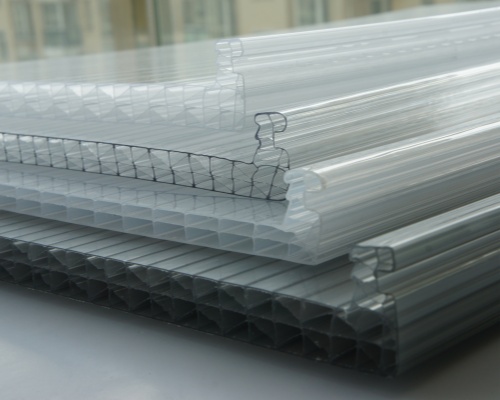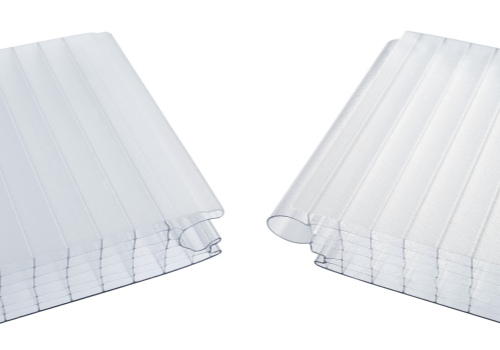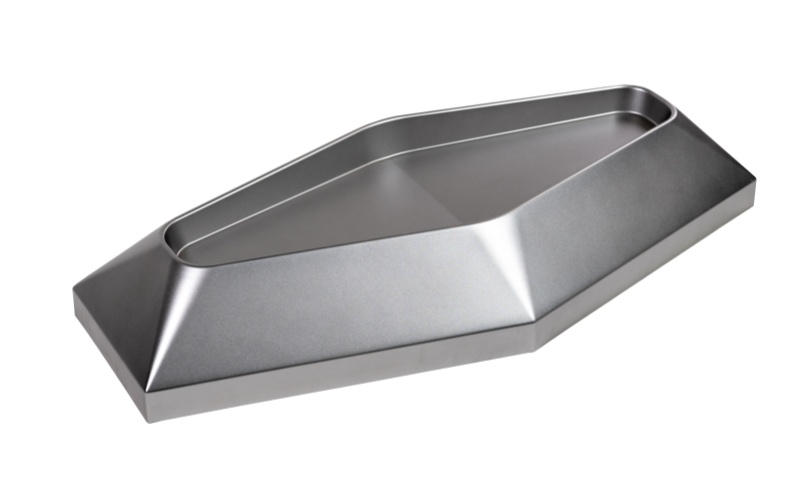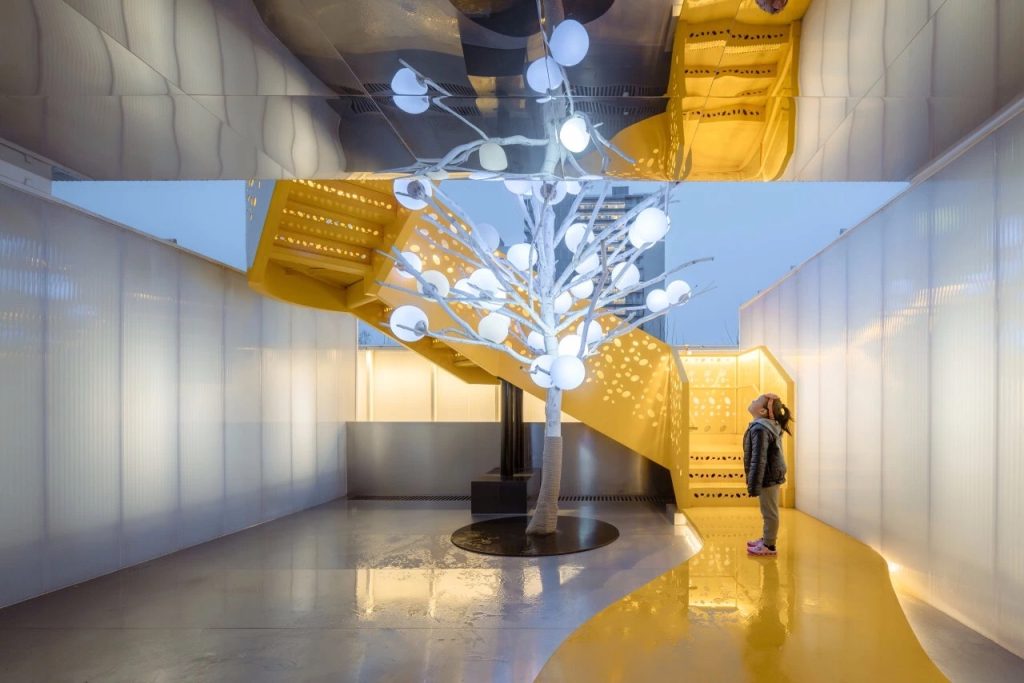Choosing the right roofing material is essential for both durability and aesthetics. Clear PVC and polycarbonate roof panels are popular options, offering different levels of impact resistance, light transmission, and UV protection. Understanding their performance, design compatibility, and best applications can guide informed decisions in construction and renovation projects. In the following sections, the key characteristics, advantages, and practical uses of both PVC and polycarbonate roofing panels will be explored.

Material Overview: Clear PVC and Polycarbonate Roof Panels
Clear PVC Roof Panels
Clear pvc roof panels use polyvinyl chloride as their main material. Manufacturers design these panels to be lightweight and flexible. They offer good transparency, which allows natural light to pass through easily.
These panels resist moisture and most chemicals. They do not handle heavy impacts or extreme temperatures as well as other options. Users often choose pvc roof panels for greenhouses, carports, and temporary shelters.
Polycarbonate Panels
Polycarbonate roof panels use a thermoplastic polymer called polycarbonate. These panels have a reputation for strength and durability. They can withstand impacts and harsh weather conditions better than pvc.
Polycarbonate panels provide excellent clarity and high light transmission. They also block harmful UV rays, which helps protect interiors and extends the lifespan of the panels.
| Properties Comparison | Clear PVC | Polycarbonate |
|---|---|---|
| Material | PVC | Polycarbonate |
| Weight | Light | Light |
| Impact Resistance | Moderate | High |
| Weather Resistance | Moderate | High |
| Light Transmission | High | High |
PVC vs Polycarbonate: Durability & Performance
Durability and Longevity
Durability plays a major role in choosing roof panels. Polycarbonate roof panels last longer than pvc roof panels in most environments. Polycarbonate resists cracking and fading over time, even with strong sunlight and rain.
Clear pvc panels offer moderate durability. They work well for short-term projects or areas with mild weather. Pvc roof panels may become brittle or discolored after years of exposure.
Impact Resistance
Impact resistance measures how well a material handles force or sudden hits. Polycarbonate stands out for its high impact and heat resistance. These panels can withstand hail, falling branches, and accidental bumps without breaking.
Pvc roof panels provide moderate protection against impacts. They may crack or dent if struck by heavy objects. Polycarbonate panels offer better safety for areas with frequent storms or risk of falling debris.
| Impact Resistance | Clear PVC | Polycarbonate |
|---|---|---|
| Light Impacts | Good | Excellent |
| Heavy Impacts | Fair | Outstanding |
| Hail Protection | Limited | Superior |
Light Transmission & Clarity

Light Transmission Levels
Clear PVC roof panels allow a high percentage of sunlight to pass through. Most panels transmit between 80% and 90% of visible light. Polycarbonate panels for roofing also offer strong light transmission, often reaching similar levels.
Both materials help create bright spaces under the roof. Users often choose these panels for greenhouses, patios, and workshops. The high light transmission supports plant growth and reduces the need for artificial lighting.
Clarity and Natural Lighting
Clarity describes how well a panel maintains a clear view and lets light pass without distortion. Clear PVC panels provide good clarity for most basic uses. Polycarbonate panels deliver superior optical clarity, which means they offer a sharper and more accurate view.
Natural lighting improves comfort and visibility in covered areas. Polycarbonate panels keep their clarity over time, even after exposure to sunlight and weather. PVC panels may lose clarity and become cloudy after several years.
| Feature | Clear PVC | Polycarbonate |
|---|---|---|
| Initial Clarity | Good | Excellent |
| Optical Clarity | Moderate | High |
| Long-Term Clarity | May decrease | Maintains quality |
UV Resistance & Thermal Insulation
UV Protection
Polycarbonate roof panels offer strong uv protection. Manufacturers often add special coatings to block most harmful ultraviolet rays. This feature helps protect people, plants, and furniture under the roof.
Clear PVC panels provide some defense against UV rays. However, they do not block as much ultraviolet light as polycarbonate panels. Over time, PVC panels may turn yellow or lose clarity because of sun exposure.
| Feature | Clear PVC | Polycarbonate |
|---|---|---|
| UV Blocking Ability | Moderate | High |
| Long-Term Clarity | May decrease | Maintains quality |
| Sun Damage Resistance | Limited | Excellent |
Thermal Insulation
Polycarbonate roof panels insulate better than clear PVC panels. The material traps heat and helps keep indoor temperatures stable. Some polycarbonate panels use a multi-wall design to improve insulation.
Clear PVC panels allow more heat to pass through. They do not provide much thermal insulation. Spaces covered with PVC panels may feel hotter in summer and colder in winter.
- Polycarbonate panels suit greenhouses and patios that need temperature control.
- PVC panels work for projects where insulation is not a priority.
Aesthetics & Design
Color Options
Clear PVC roof panels usually come in transparent or lightly tinted finishes. These panels allow natural light to pass through and create a bright environment. Polycarbonate roof panels offer more variety, including clear, opal, bronze, and other colors.
Manufacturers produce polycarbonate panels in different shades to match various design needs. Some users select colored panels to reduce glare or add privacy. Colored panels can also help control heat and light levels inside a space.
| Panel Type | Common Colors Available |
|---|---|
| Clear PVC | Clear, Light Tint |
| Polycarbonate | Clear, Opal, Bronze, Blue |
Design Compatibility
Both clear PVC and polycarbonate roof panels suit many building styles. PVC panels work well for simple structures like sheds, greenhouses, and carports. Their lightweight design makes them easy to install on basic frames.
Polycarbonate panels fit modern and traditional designs. Builders use them for patios, skylights, and covered walkways. These panels provide better clarity and maintain their appearance over time.
Designers often choose polycarbonate panels for projects that need a sleek look and long-lasting performance. PVC panels remain a good choice for temporary or budget-friendly builds.
Pros & Cons of PVC and Polycarbonate Roof Panels
PVC Roof Panels Pros & Cons
PVC roof panels offer several advantages for many projects. They cost less than most alternatives and provide good light transmission. Many people choose them for greenhouses, sheds, and temporary shelters.
Pros:
- Lightweight and easy to handle
- Affordable for large or small projects
- Good resistance to moisture and chemicals
- Simple to cut and install with basic tools
Cons:
- Lower impact resistance compared to polycarbonate
- Can become brittle or discolored after long sun exposure
- Limited UV protection
- Shorter lifespan in harsh weather
Polycarbonate Roof Panels Pros & Cons
Polycarbonate roof panels stand out for their strength and durability. They resist impacts and harsh weather better than pvc. Many builders use them for patios, skylights, and permanent structures.
Pros:
- High impact resistance, even against hail or falling branches
- Excellent UV protection with special coatings
- Maintains clarity and strength for many years
- Better thermal insulation than pvc roof panels
Cons:
- Higher initial cost than pvc
- Slightly heavier, but still easy to handle
- May require power tools for cutting thicker sheets
| Feature | PVC Roof Panels | Polycarbonate Roof Panels |
|---|---|---|
| Cost | Lower | Higher |
| Durability | Moderate | Excellent |
| UV Protection | Limited | High |
| Impact Resistance | Moderate | Outstanding |
Best Uses for PVC and Polycarbonate Roof Panels
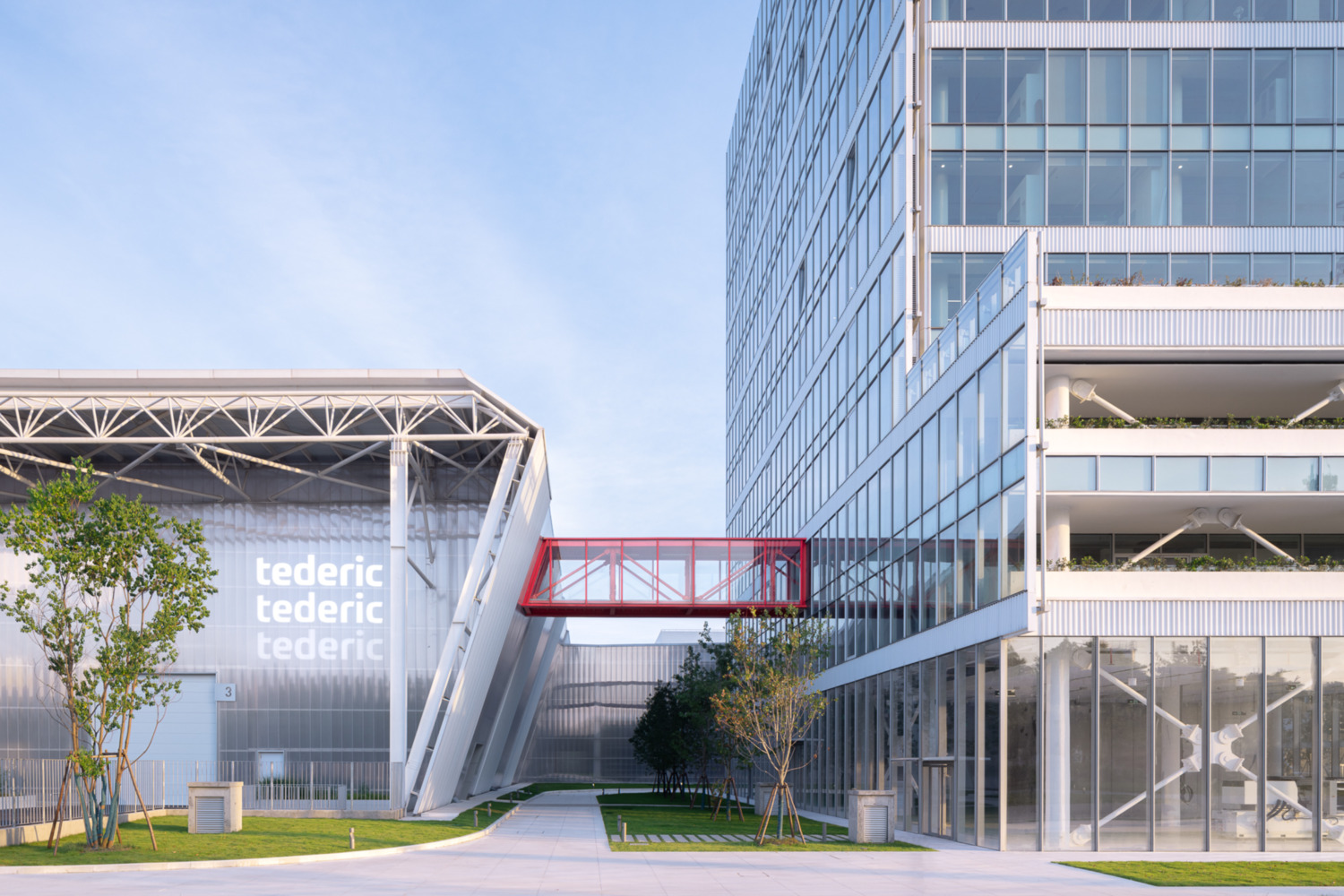
Clear PVC Applications
Clear pvc panels suit projects that need high light transmission and low cost. Gardeners often use these panels for greenhouses because plants grow better with more sunlight. Builders choose pvc roof panels for sheds, carports, and temporary shelters.
People install these panels in areas that do not face heavy impacts or extreme temperatures. The lightweight design makes them easy to handle and fit on simple frames. Users often select clear pvc for short-term or seasonal structures.
Common Applications for Clear PVC:
- Greenhouses
- Sheds
- Carports
- Temporary shelters
- Animal enclosures
Polycarbonate Roof Panels Applications
Polycarbonate roof panels provide strong protection and long-lasting performance. Ideal for patios, skylights, and covered walkways, these panels resist hail, wind, and sun damage while allowing natural light to brighten spaces.
Polycarbonate suits permanent installations in regions with harsh weather. Builders install polycarbonate roof panels on greenhouses that need better insulation and durability. Schools and businesses choose polycarbonate for outdoor areas that require safety and clarity.
The material supports modern designs and fits both residential and commercial projects. Polycarbonate panels help control temperature and block harmful UV rays. Users select polycarbonate for applications where strength and longevity matter most.
CommonApplications for Polycarbonate Roof Panels:
- Patios
- Skylights
- Covered walkways
- Permanent greenhouses
- Commercial canopies
| Application Type | Clear PVC | Polycarbonate Roof Panels |
|---|---|---|
| Greenhouses | Good | Excellent |
| Patios | Fair | Excellent |
| Sheds | Good | Good |
| Skylights | Limited | Excellent |
| Temporary Shelters | Excellent | Good |
| Commercial Canopies | Limited | Excellent |
Conclusion
Both clear PVC and polycarbonate roof panels offer distinct advantages for residential and commercial applications. Clear PVC panels provide excellent light transmission and a cost-effective solution for patios, greenhouses, and skylights.
Polycarbonate panels combine durability, impact resistance, and UV protection, making them ideal for areas exposed to harsh weather. When choosing between PVC and polycarbonate, factors such as longevity, thermal insulation, and aesthetic compatibility should be considered. Understanding the pros and cons of each material helps ensure the selection of the most suitable roofing solution, balancing performance, clarity, and long-term value.
